The USACE tackles the former military reactor in Alaska
October 11, 2024, 3:00PMRadwaste SolutionsThe U.S. Army Corps of Engineers, Baltimore District A team member wearing a powered air-purifying respirator prepares to enter the SM-1A vapor containment structure. (Photo: USACE/David Gray)
With the recent mobilization at the site of the former SM-1A nuclear power plant at Fort Greely, Alaska, the Radiological Health Physics Regional Center of Expertise, located at the U.S. Army Corps of Engineers’ Baltimore District, began its work toward the decommissioning and dismantlement of its third nuclear power plant, this time located just 175 miles south of the Arctic Circle.
A whitetail buck stops at the Fernald Preserve.
(Photo: Jeff Sluder/LM)
Focused on the post-cleanup management of closed Department of Energy sites, the DOE Office of Legacy Management (LM) is responsible for the long-term surveillance and maintenance of more than 100 sites across the United States and Puerto Rico associated with past radiological and nuclear material production and testing, and energy research—some dating from as early as the Manhattan Project. With cleanup completed, many of these sites have been put to beneficial reuse and repurposed as parks and nature preserves, where visitors can witness the return of thriving ecosystems.
The JCB excavator robot developed by Forth Engineering for the Sellafield nuclear site.
Robotics is fast becoming a go-to for nuclear decommissioning advances, and several organizations working in West Cumbria, England, the hub of the United Kingdom’s energy sector, have formed a partnership to share insight and work together to address common challenges and opportunities. Cumbria Robotics Cluster is an ambitious initiative powered by the Industrial Solutions Hub (iSH) to harness and expand the region’s renowned capabilities in cutting-edge engineering and problem solving.
The Hanford Field Office leadership team gathers around a new sign at the Stevens Center Complex in Richland, Wash., on October 1. (Photo: DOE)
Beginning last week, the two Department of Energy offices responsible for the environmental cleanup of the department’s Hanford Site have been combined under a new name: the Hanford Field Office. Previously, management of the 586-square-mile site near Richland, Wash., was split between the Richland Operations Office and the DOE Office of River Protection (ORP).
Decommissioning begins on the closed Wisconsin power plant
Wisconsin’s Kewaunee nuclear power plant as it appeared in May of this year. A number of ancillary buildings have already been demolished and their waste removed. The intermodal waste transportation staging areas can be seen to the left. The site ISFSI is out of view to the right. (Photo: EnergySolutions)
In October 2012, Dominion Energy announced it was closing the Kewaunee nuclear power plant, a two-loop 574-MWe pressurized water reactor located about 27 miles southeast of Green Bay, Wis., on the western shore of Lake Michigan. At the time, Dominion said the plant was running well, but that low wholesale electricity prices in the region made it uneconomical to continue operation of the single-unit merchant power plant.
Hanford’s HLW Facility under construction in early 2024. (Photo: Bechtel National)
The Government Accountability Office has recommended that the Department of Energy put a hold on construction of its High-Level Waste Facility at the Hanford Site near Richland, Wash. The GAO said design and construction of the facility, part of Hanford’s Waste Treatment and Immobilization Plant, also known as the Vit Plant, should be paused until several actions are taken, including considering other alternatives for managing the site’s high-level radioactive liquid waste.
Workers prepare to remove from a specialized transportation trailer the first of three sludge-settling tanks for Oak Ridge’s Mercury Treatment Facility. (Photo: DOE)
Workers with the Oak Ridge Office of Environmental Management (OREM) and its contractor UCOR have finished installing the first of three large sludge-settling tanks for the Mercury Treatment Facility at the site’s Y-12 National Security Complex. The tanks, each of which will be 38 feet tall and 15 feet wide with a capacity of 36,000 gallons, provide a visible sign of ongoing progress on the facility where much of the construction has so far been below ground.
Idaho National Laboratory employees consult on a microgrid at Utah’s Dugway Proving Ground. Two solar projects were selected for development on INL land. (Photo: INL)
On July 28, 2023, the Department of Energy launched its Cleanup to Clean Energy initiative, an effort to repurpose underutilized DOE-owned property—portions of which were previously used in the nation’s nuclear weapons program—into the sites of clean-energy generation.
Crews demolished a former chemical storage area at the Hanford Site’s Reduction Oxidation Plant. (Photos: DOE)
Workers with the Department of Energy Office of Environmental Management’s contractor Central Plateau Cleanup Company recently demolished a former chemical storage area at the Reduction Oxidation Plant, one of five former plutonium production facilities at the Hanford Site.
The Waste Isolation Pilot Plant in southeastern New Mexico. (Photo: DOE)
Juno Beach, Fla.–based NextEra Energy Resources Development has been selected to enter realty negotiations for a large-scale solar electricity generation project at the DOE’s Waste Isolation Pilot Plant (WIPP) in southeastern New Mexico as part of the department’s Cleanup to Clean Energy initiative.
Crews with the Idaho National Laboratory Site’s IWTU replace filter bundles inside the unit’s process gas filter. (Photo: DOE)
The Department of Energy’s Office of Environmental Management announced yesterday that waste processing operations have resumed at the Integrated Waste Treatment Unit (IWTU) at the Idaho National Laboratory Site. The resumption of operations follows the completion of two maintenance campaigns at the radioactive liquid waste treatment facility.
TMI-2 Community Advisory Panel board chair Dave Allard at the panel’s September meeting.
The Pennsylvania Department of Environmental Protection (DEP) expressed its confidence in the decommissioning work taking place at the damaged Three Mile Island Unit 2 during a recent meeting of the TMI-2 Community Advisory Panel (CAP). “We cannot be more pleased with the progress being made,” said Dwight Shearer, director of the DEP, during the meeting, held on September 13 in Middleton, Pa.
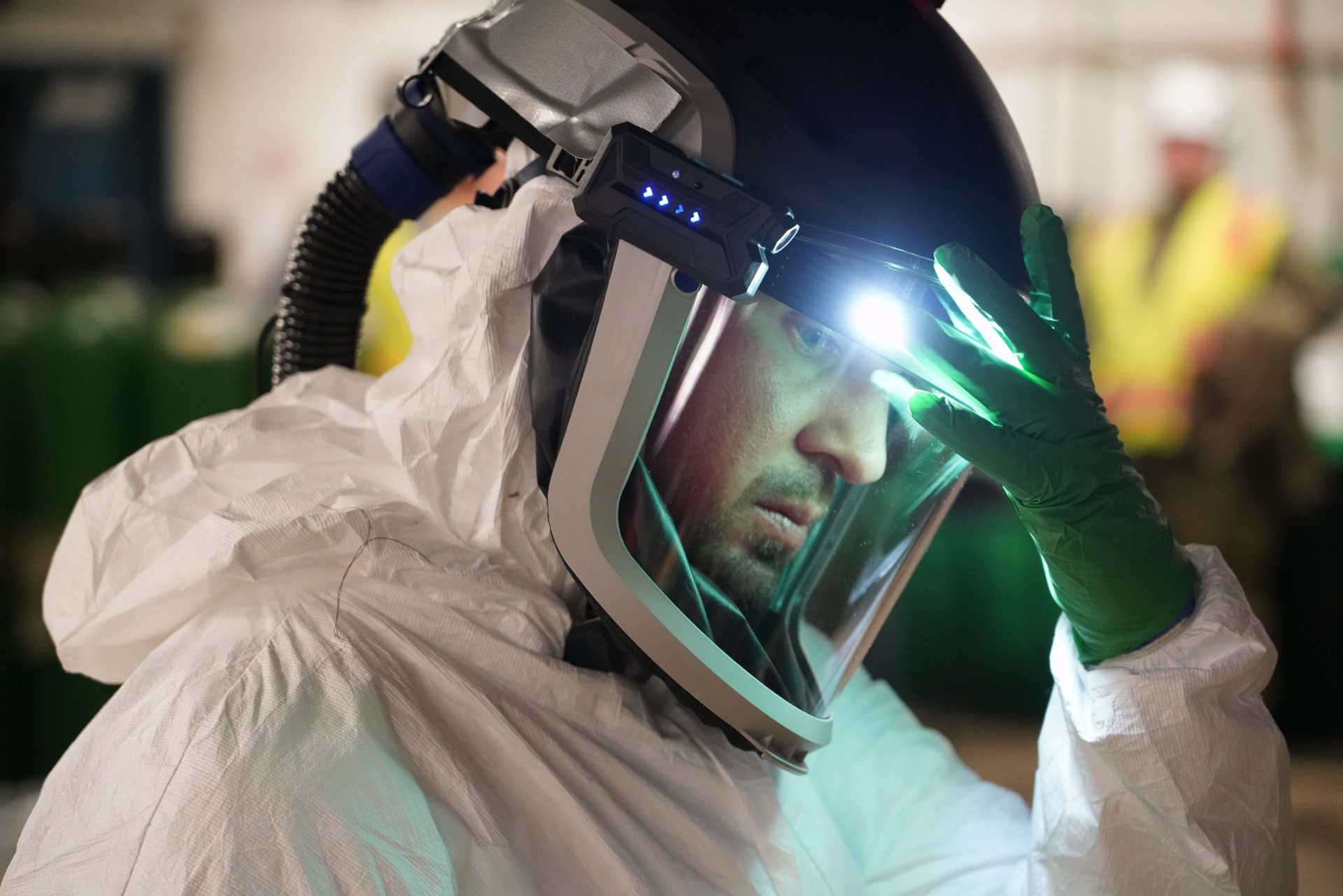





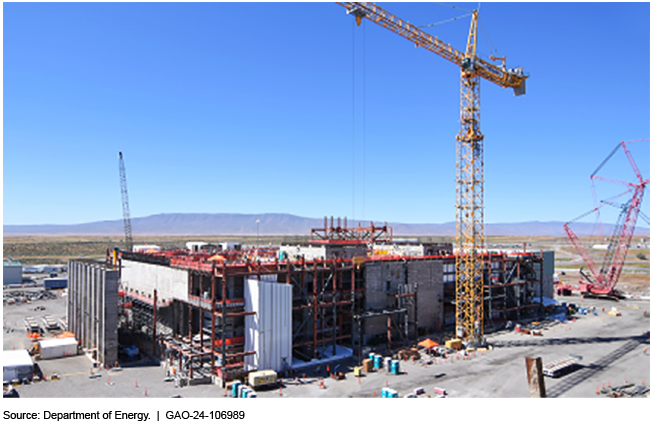



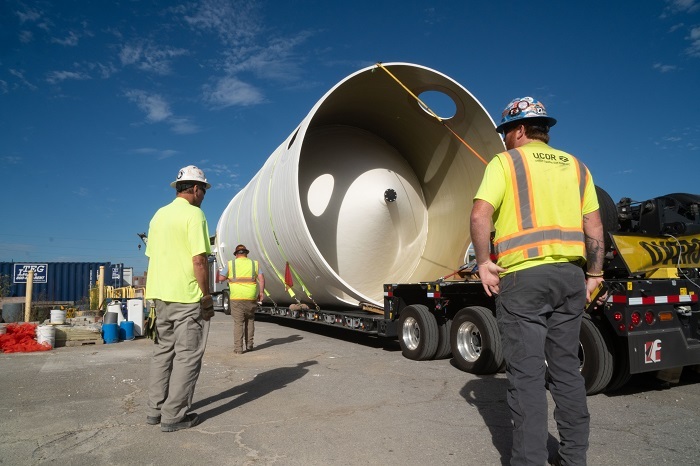
 Regardless of who is sitting in the Oval Office next year, the Department of Energy’s Office of Environmental Management needs to take a close look at itself and “launch a comprehensive review of all aspects of the EM program,” according to a new report from the Energy Communities Alliance, which represents communities adjacent to or near DOE nuclear cleanup sites.
Regardless of who is sitting in the Oval Office next year, the Department of Energy’s Office of Environmental Management needs to take a close look at itself and “launch a comprehensive review of all aspects of the EM program,” according to a new report from the Energy Communities Alliance, which represents communities adjacent to or near DOE nuclear cleanup sites.
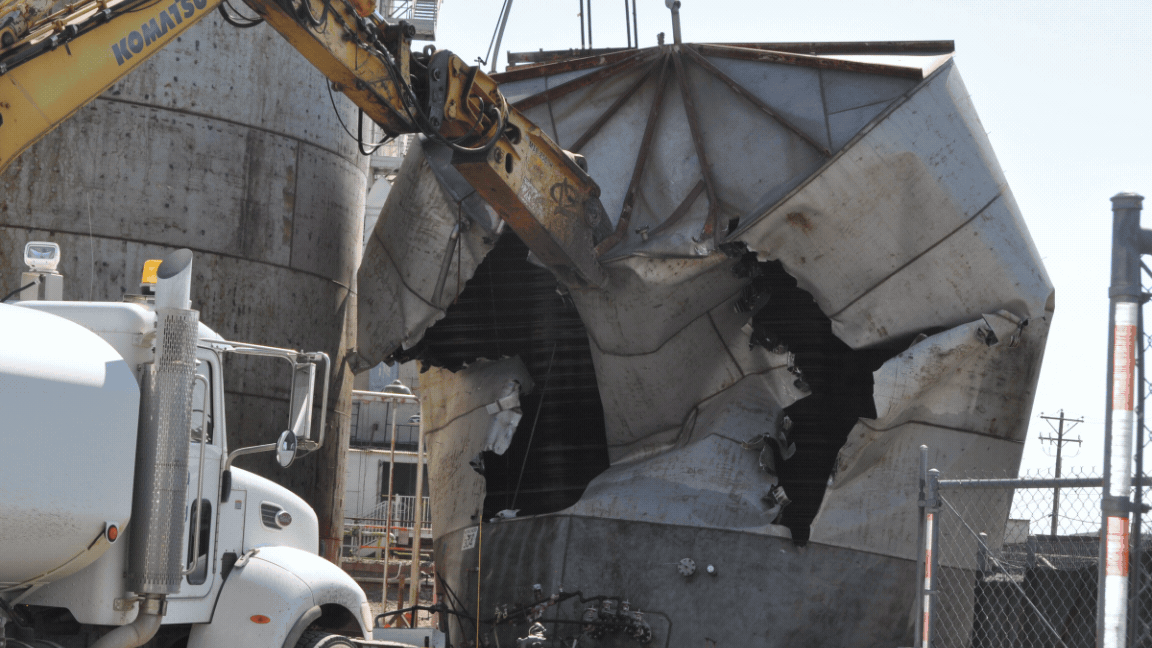
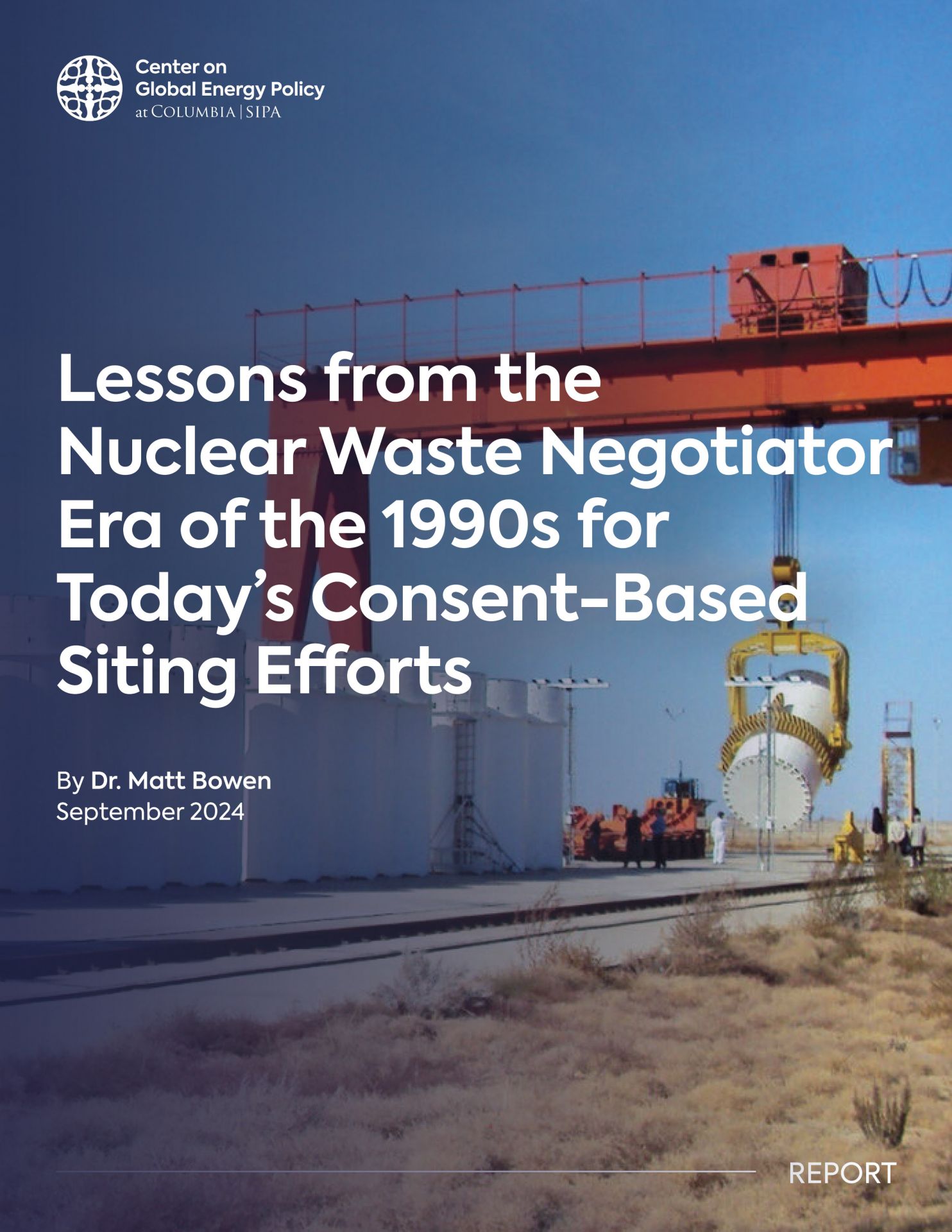 As the Department of Energy embarks on its consent-based process for siting a geologic repository for spent nuclear fuel and high-level radioactive waste, a new report from the Center on Global Energy Policy at Columbia University SIPA highlights relevant lessons from the federal government’s now defunct Office of the Nuclear Waste Negotiator.
As the Department of Energy embarks on its consent-based process for siting a geologic repository for spent nuclear fuel and high-level radioactive waste, a new report from the Center on Global Energy Policy at Columbia University SIPA highlights relevant lessons from the federal government’s now defunct Office of the Nuclear Waste Negotiator.
